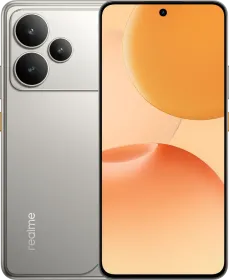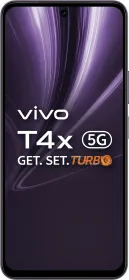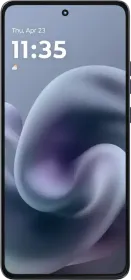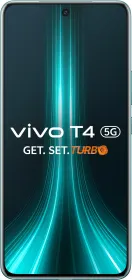The OPPO K13 is being hyped up as the new “OP smartphone” for the online market in its segment. And honestly, given the features it brings, that doesn’t sound too far off. OPPO’s clearly trying something new this time—better specs, better battery, better experience overall.
You’re getting the Snapdragon 6 Gen 4 SoC here, which—fun fact—is actually better than the Dimensity 7300 and just slightly below the Snapdragon 7s Gen 3 used in phones like the realme 14 Pro+ and the Phone 3a Pro. Plus, you’ve got a 120 Hz AMOLED display, a 7,000 mAh battery (yes, 7,000), 80W SSUPERVOOC charging, and a decent camera setup.

There are also a bunch of AI features that come really close to what you’d find on other OPPO phones. Add to that a proper cooling setup (6000 mm² graphite + 5700 mm² VC chamber), decent weight at 208 grams, and a 8.45 mm build—and you’ve got a phone that sounds great on paper.
But does it actually deliver in real life? That’s exactly what we’re going to find out in this review. I’ve tested the cameras, performance, battery life, charging, and the OS experience. So let’s get into it.
OPPO K13 Price & Availability
The OPPO K13 is available in two color options—Icy Purple and Prism Black. It comes in two RAM and storage variants: 8GB + 128GB, and 8GB + 256GB. You can get it via Flipkart, the OPPO Store, and other leading retail outlets. The pricing is as follows:
- 8GB + 128GB: ₹17,999
- 8GB + 256GB: ₹19,999
You can avail a ₹1,000 off on each variant for a limited period, bringing the starting price down to ₹16,999.
Pros
- Snapdragon 6 Gen 4 SoC
- 7,000 mAh battery
- Great battery life
- Fast 80W SUPERVOOC charging
- Vibrant 120 Hz AMOLED display
- Solid build with IP65 and MIL-STD-810H
- Feature-rich ColorOS 15 with AI suite
- Smooth performance for daily tasks
- Stereo speakers
Cons
- Average camera performance and no OIS
- 2 MP depth sensor is ineffective
- Disappointing haptics
- Bloatware (though removable)
- No HDR playback in YouTube
OPPO K13 Specifications
- Display: 6.67-inch AMOLED, Flat, 120 Hz, 1200 Nits peak, FHD+ (2400 x 1080), 394 PPI, 360Hz PWM
- SoC: Qualcomm Snapdragon 6 Gen 4 (4nm)
- RAM: 8 GB LPDDR4X
- Storage: 128 GB / 256 GB UFS 3.1
- Main Camera: 50 MP OV50D, 1/2.88-inch, f/1.85, 27mm, AF, no OIS, 4K30
- Depth Camera: 2 MP
- Front Camera: 16 MP IMX480, 1/2.6-inch, f/2.4, 23mm
- Speakers: Stereo with 300% Ultra Volume Mode
- Battery and Charging: 7,000 mAh, 80W SUPERVOOC
- IP Rating: IP65
- Connectivity: 5G, Wi-Fi, Bluetooth, USB-C, AI LinkBoost 2.0, Beacon Link
- Biometrics: In-display optical fingerprint, 2D face unlock
- Weight and Dimensions: 208g / 8.45 mm thickness
- Build: Plastic back and frame, flat display with pre-installed screen protector
OPPO K13 Review: Design and Build

The OPPO K13 comes with an all-plastic build, but it doesn’t feel cheap. There’s a nice bit of heft to it—it weighs 208 grams (not bad for a phone with a 7,000 mAh battery)—so it feels sturdy in the hand. The phone is on the larger side with a 6.7-inch display, but once you start using it, you do get used to the size pretty quickly. It’s not uncomfortable to hold or use.
The design is actually quite nice. You’re getting a fresh look here—something we might see on future phones like the OnePlus 13T/s and the Reno 14 lineup. The back has a clean layout with one actually useful 50 MP camera and a 2 MP depth sensor that’s more or less there for the spec sheet. You also get the LED flash.

The variant I have, Prism Black, has these cool geometric diamond patterns that show up under light, and you’ll see something similar on the Icy Purple version too. The OPPO logo also has a glossy finish that adds to the look.
The phone is 8.45 mm thick, and despite being all plastic, it’s surprisingly durable. You get MIL-STD-810H certification and an IP65 rating, so it can handle a bit of rough use and splashes here and there. The display is flat, which is a plus for handling and screen protectors (also, there’s one pre-installed).

Port and button placement is straightforward: USB-C port, SIM tray (dual nano SIM), and primary speaker at the bottom. Right side has the power button and volume rockers (placed slightly high, but manageable). Left side is clean. Up top, you get the IR blaster, a secondary mic, and the top speaker for stereo sound.


So yes, for the price, the OPPO K13 gives you a solid in-hand feel, a fresh design, and a build that should hold up over time.
OPPO K13 Review: Display

When it comes to the display, the OPPO K13 holds up really well for its price. You’re looking at a 6.67-inch AMOLED panel—what OPPO calls an “ultra slim display”—with a peak brightness of 1200 Nits and a smooth 120Hz refresh rate. Resolution-wise, it’s Full HD+ (1080 × 2400) with a pixel density of 394 PPI, so everything is sharp.
Out of the box (Auto mode), I found some apps were running at 90Hz, but switching to “High” mode in the settings fixes that. After that, most apps run at 120 Hz without having to manually enable 120 Hz for them.
The color tuning on this display is actually pretty nice—punchy without being oversaturated—and the display gets bright enough for most conditions. In very harsh sunlight, though, you will find yourself squinting, but under normal outdoor use, it holds up fine.

The PWM dimming is actually poor, at 360Hz, and you might experience eye strain if you are sensitive.
Watching content on the OPPO K13 is actually a pretty enjoyable experience. Yes, the bezels are there—and there’s a slight chin too—but they’re not really distracting once you start watching something. There’s a punch-hole cutout, but again, nothing that gets in the way.

Text is sharp, videos look good, and you can even fine-tune the colors from the display settings if you prefer cooler or warmer tones.
Small but nice additions like wet-hand touch support and Glove Mode are here too, which you don’t often see at this price. Overall, I think the OPPO K13 nails the display experience for the price.
OPPO K13 Review: Speakers and Haptics

The OPPO K13 comes with stereo speakers that are loud, clear, and good enough for everyday use. The bass isn’t very strong, but the overall sound is decent. You also get a 300% Ultra Volume Mode, which boosts loudness even further, though with distortion. It’s fine for outdoor use or calls in noisy places I guess.
As for the haptics, they’re disappointing. The feedback feels cheap and more audible than tactile. It’s fine for alarms or calls, but for typing, it’s just unpleasant. However, for the price, this is what you usually get.
The system-wide haptic integration is inconsistent: you won’t get haptic feedback while adjusting brightness or volume, but you will get it while going back or accessing the recent apps screen.
OPPO K13 Review: Software

The OPPO K13 runs on ColorOS 15 based on Android 15, and it brings one of the richest software and AI experiences you’ll find in this price segment. OPPO has committed to two years of major Android updates and three years of security patches, which is fine for a phone under ₹20,000.
The overall user experience is extremely smooth, with fluid animations across the system. You get full system-wide animations even when apps are not in memory, and they remain consistent while opening or closing apps, switching screens, or navigating between UI elements.
The wallpaper scaling animation is present and smooth, and you can see a soft zoom-out effect during app transitions. However, the blur effect while opening or closing apps is missing, which is understandable considering the Snapdragon 6 Gen 4 chip powering the device.

That said, the general performance still feels like one of the smoothest in its segment (although there are occasional jitters). The main blur elements such as the control center and app drawer do support soft blur, but advanced blur modes are not present.
The phone supports Flux Themes, but you don’t get the word art Flux themes and there’s no option to sync the lock screen and always-on display, meaning there is no transition from the lock screen to the AOD. This could be added later, as the chipset is capable of handling it.

Bloatware is present, and you’ll find a lot of pre-installed apps, but the silver lining is that most of them can be uninstalled or disabled. Unlike vivo, where some apps like the vAppStore and vivo Browser are locked in, here you can remove or disable the AppMarket and OPPO browser as well as stop the annoying notifications.

Cleaning up everything, disabling lock screen magazine, and removing unwanted apps takes about five minutes. Once that’s done, the phone feels much cleaner and lighter.
Core ColorOS features like split-screen, floating windows, smart sidebar, and live alerts (which are OPPO’s take on the iPhone-style Dynamic Island) are all available.

File Dock is included too, which works across OPPO devices and allows you to drag and drop text, files, images, and videos between apps.

AI Features
But what really sets the OPPO K13 apart is its AI suite, which is probably the best in this segment. It starts with photo-based AI features. You get AI Unblur to fix blurry images, an AI 4K Upscaler or Clarity Enhancer that makes images sharper and more detailed, especially when zooming in. You can also club them but I found the Clarity Enhancer to be altering text and making the image look too artificial.


AI Reflection Remover helps clear glare from glasses and mirrors (this one is really helpful), while AI Eraser 2.0 gives you both a lasso and a brush tool to remove unwanted objects or people from your photos. There’s also a Live Photo feature which captures 1.5 seconds before and after a shot, allowing you to select the best frame(s) later.


Moving to productivity, you have AI Summary that works from the sidebar. It reads the current webpage (as long as the title is visible) and gives you a quick summary, powered by Google Gemini. AI Speak can convert entire articles into audio, so you can listen instead of reading.

The AI Writer tool works inside apps like Telegram, Twitter, and even Google Docs, allowing you to rewrite, shorten, elaborate, or change the tone of your message to formal, casual, or friendly. There’s also AI Reply which gives context-aware suggestions in messaging apps like WhatsApp, Instagram, and Telegram, including different tone options.

A particularly cool feature is Screen Translate, where you tap on Screen Translate in the smart sidebar and it translates the content on your screen using Google Lens. However, I don’t think we need this because we already have Circle to Search.

Within the Notes app, you get AI Notes Assistant, which lets you change the tone of your note, condense or polish the content, reword it, or even convert the note into a table for better readability. And I love the OPPO Documents app—it has been really helpful for me.
Another standout is the AI Voice Scribe feature. It works with the new Phone app, which is an all-new dialer from OPPO, replacing the Google Dialer. This app allows you to record calls, generate a summary, and save that summary inside the Notes app.
The Phone app itself supports Live Alerts, has bigger icons, a cleaner layout, and integrates deeply with the AI suite, making the overall experience smoother and smarter.

In terms of Google integration, Circle to Search is available by long-pressing the bottom bar and circling anything on the screen to get instant results from Google. You also get direct access to Google Gemini, including Gemini Live.

So, despite some bloatware (which can be easily removed or disabled), the OPPO K13 delivers what is likely the best software and AI experience under ₹20,000. It’s not just about the usual ColorOS polish, this phone goes beyond with its AI features, some of which are actually useful in day-to-day life.
OPPO K13 Review: Biometrics

When it comes to biometrics, the OPPO K13 comes with an in-display optical fingerprint scanner, which is placed slightly lower than ideal—pretty much standard for phones in this segment. While the placement might take a bit of getting used to, the scanner itself performs well. It’s fast, accurate, and reliable.
You also get 2D face unlock, which works in good lighting and has a brightness confirmation feature for low-light situations. However, it’s not particularly secure or consistent, so it’s best treated as a backup option.
OPPO K13 Review: Performance

The OPPO K13 is powered by the Snapdragon 6 Gen 4 chipset, and while it’s not a powerhouse, it does handle daily usage and casual gaming well. The phone comes in two configurations—8 GB RAM with 128 GB storage, and 8 GB RAM with 256 GB storage.
The RAM is LPDDR4X, and the storage is UFS 3.1, which helps with faster app loading and smoother multitasking. For its price, the overall performance is quite solid.
It also includes a few hardware-level enhancements that improve sustained performance. There’s a 6000 mm² graphite sheet for heat dissipation, along with a 5700 mm² DC cooling system. These aren’t just marketing terms—they genuinely help keep the device cool under load.
The phone also features software-level performance boosters like AI HyperBoost, which is said to eliminate lag and optimise your games on the fly. There’s also the AI Adaptive Frame Stabilization algorithm, which, in theory, should help keep a steady FPS during gameplay.
Synthetic Benchmarks
But, when we go further, let’s talk about synthetic benchmarks. I ran every major benchmark, and also compared it to the newly launched Dimensity 7400 and the Snapdragon 7s Gen 3. Here are the results:

| Benchmark | Snapdragon 6 Gen 4 (OPPO K13) | Dimensity 7400 (Motorola Edge 60 Fusion) | Snapdragon 7s Gen 3 (realme 14 Pro+) |
| AnTuTu Score | 711,176 | 682,953 | 822,546 |
| Storage (Score, Sequential Read Speed, Write Speed) | 93,365 (Score), 1912 MB/s (Read), 1005 MB/s (Write) | 57,878 (Score), 866 MB/s (Read), 849 MB/s (Write) | 1,099,921 (Score), 2027 MB/s (Read), 2003 MB/s (Write) |
| Geekbench 6 CPU (Single-Core, Multi-Core) | 986 (Single-Core), 2873 (Multi-Core) | 1045 (Single-Core), 3013 (Multi-Core) | 1179 (Single-Core), 3214 (Multi-Core) |
| Geekbench 6 GPU (OpenCL, Vulkan) | 2933 (OpenCL), 3953 (Vulkan) | 3149 (OpenCL), 3109 (Vulkan) | 3360 (OpenCL), 3958 (Vulkan) |
| 3DMark Wildlife Extreme (Score, Avg FPS) | 952 (Score), 5.71 (Avg FPS) | 1023 (Score), 6.13 (Avg FPS) | 1077 (Score), 6.45 (Avg FPS) |
| 3DMark Wildlife Extreme Stress Test (Best Loop, Lowest Loop, Stability) | 965 (Best Loop), 951 (Lowet Loop), 98.6% (Stability) | 1019 (Best Loop), 1001 (Lowest Loop), 98.2% (Stability) | 1080 (Best Loop), 1074 (Lowest Loop), 99.4% (Stability) |
The Motorola with Dimensity 7400 pulls ahead of the 6 Gen 4 slightly in CPU benchmarks, but falls behind when it comes to others and especially storage speeds. That makes the OPPO K13 more responsive in actual usage, especially when launching apps or loading game assets.
So yeah, to sum it all up—the OPPO K13 holds its own really well for the price. And when it comes to thermals, the K13 doesn’t throttle much, which is another big plus. Now let’s take a look at the gaming performance.
Gaming
The OPPO K13 delivers solid gaming performance with 60 FPS on BGMI’s Smooth + Extreme settings and an average FPS of 58.7, staying cool with temps peaking at 41.4°C. Genshin Impact runs at 42.4 FPS (Highest + 60FPS), offering decent gameplay for the price. The gyro in BGMI also is very responsive.

Connectivity
On the connectivity front, the OPPO K13 comes with a “game exclusive Wi-Fi antenna,” strategically placed to stay unobstructed when holding the phone in landscape mode. That makes a real difference when gaming or streaming.
It also supports AI LinkBoost 2.0, which combines a 360-degree annular ring antenna system with Intelligent Network Switching to ensure a stable connection at all times. Even more interesting is Beacon Link, a feature that allows you to make calls using Bluetooth even without a network, essentially using another device as a relay.
Day-to-day Tasks

For regular day-to-day tasks, the OPPO K13 performs smoothly. Apps load quickly, RAM management is efficient, and tasks like basic video and photo editing are handled with ease. Overall, the device provides a great user experience for both gaming and general usage, given its price point.
OPPO K13 Review: Cameras

The OPPO K13 has a 50 MP rear camera using the OV50D sensor with an f/1.85 aperture and a sensor size of 1/2.88 inches. The focal length here is 27 mm. There’s autofocus, which should be there, but there’s no OIS.
For secondary, there’s just a 2 MP depth sensor, which doesn’t really do anything. On the front, you get a 16 MP selfie camera, that’s the Sony IMX480. It has an f/2.4 aperture, a 23 mm focal length, and a 1/2.6-inch sensor size. Yes, larger than the main.
Rear Camera
In daylight, the rear camera performs decently well. It captures good colors and has quite a few filters—Serenity being a personal favorite. However, the lack of OIS hurts the experience. The shutter speed can also feel slow at times.

Some shots look blurry, and after you take a photo, there’s a bit of delay in processing where a few frames seem skipped and the final shot doesn’t always look like the preview. HDR performance is hit or miss.Zooming in 2X gives you usable crops, but anything beyond that looks oversharpened.












Depth of field isn’t great either. In low light, performance is just average, again because there’s no OIS. You do get features like AI Clarity Enhancer and AI Eraser, which help clean things up post-shot.















Selfie Camera
When it comes to the selfie camera, you can get good results in daylight and it’s fine for casual use, with decent detail, but… sometimes you’ll find it adding a bit of an artificial bloom effect, especially when shooting backlit. Low-light selfies aren’t very impressive.
Portrait Mode and Other Features
Live Photos are supported on both front and rear cameras. You can manually adjust EV, shoot in Portrait mode, and even use Pro Mode. Portrait shots can be taken at 27 mm and 54 mm, and while the results are fine, the 54 mm shots sometimes have edge detection issues that could probably be fixed in an update. Skin tones are excellent.



Videos
Video recording is a mixed bag. Footage from the rear camera is capped at 4K30, but the colors can be too punchy and details too sharp. There’s no OIS, and while there is some EIS, it’s jittery even in good lighting.
Overall, the cameras are the weakest part of the OPPO K13. If you’re just taking casual photos, it’s manageable. It’s fine for someone who mainly uses Snapchat or Instagram. However, if you care about OIS and camera quality, you might want to look elsewhere.
OPPO K13 Review: Battery Life and Charging

The OPPO K13’s most standout feature is its large 7,000 mAh battery. OPPO says that this is a graphite dual-cell battery, not just any regular silicon-anode one. OPPO claims that the battery can last up to 5 years, thanks to their self-developed bionic repair electrolyte technology, which enhances longevity.
In real-world usage though, the battery life on the OPPO K13 is exceptional. With moderate use, I’ve got up to 12 hours of screen-on time, while heavy usage still delivers around 8 to 9 hours.

This is probably the best battery life I’ve gotten on a phone. My usage includes a chunk of social media, content watching, camera usage outdoors, hotspot, a bit of gaming, and other basic tasks.
When it comes to charging, the OPPO K13 includes an 80W charger in the box that can charge the phone to 100% in under 1 hour. However, it’s important to enable the Smart Rapid Charging feature, as the phone charges the fastest only when it’s turned on.
Overall, the battery life and charging are by far the strongest aspects of the OPPO K13.
Review Verdict: Should You Buy the OPPO K13?
The OPPO K13, launched at ₹17,999 (with offers bringing it down to ₹16,999), offers excellent value for money. For the price, you get strong performance, an impressive 7,000 mAh battery, a great display, good speakers, and fast charging. The design and build quality have also seen noticeable improvements.
The software is smooth and comes packed with AI features, further enhancing the user experience. However, the cameras are a weak point here. If you can overlook the camera performance, the OPPO K13 stands out as a solid choice in its segment, providing excellent overall features at an affordable price.

Smartprix ⭐ Rating: 8.2/10
- Design and Build: 8/10
- Display: 8.7/10
- Speakers: 8.5/10
- Software: 8.5/10
- Haptics: 6.5/10
- Biometrics: 9/10
- Performance: 8.7/10
- Cameras: 6.5/10
- Battery Life & Charging: 9.5/10
First reviewed in April 2025.





































